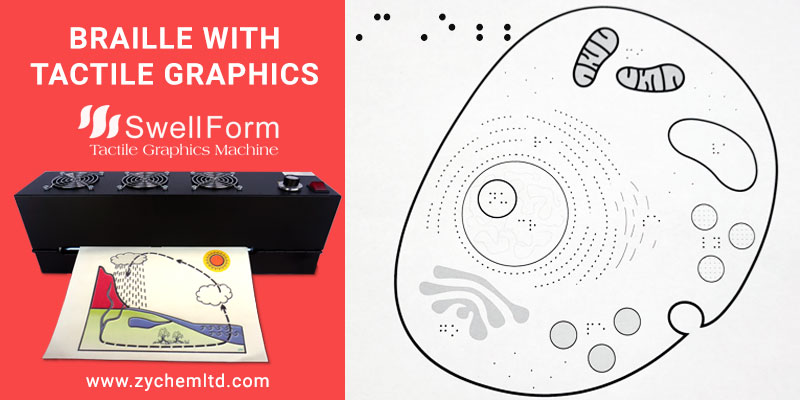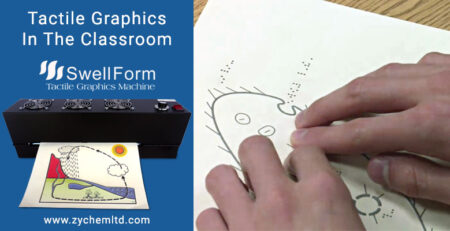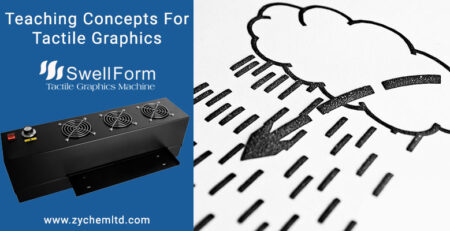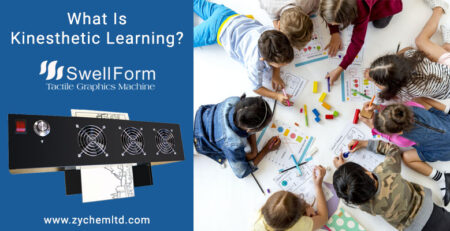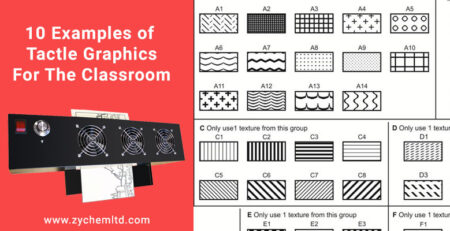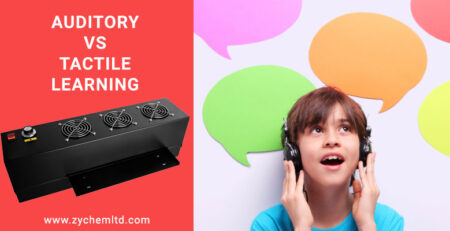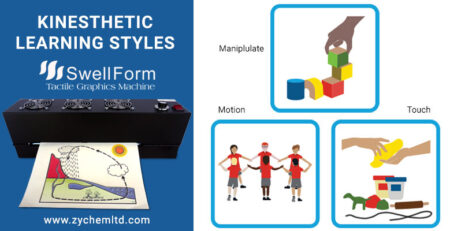Including tactile graphics in braille books has helped expand educational programs for the blind and visually impaired, creating additional tools for learning and comprehension. Braille, a system of raised dots representing letters and numbers, is a fundamental component of tactile learning, as it provides access to written language. Tactile graphics, on the other hand, utilize embossed lines, shapes, and textures to represent visual information in a tactile format.
Braille plays a crucial role in tactile learning by enabling individuals with visual impairments to read and comprehend written text. Learning to read and write braille equips students with literacy skills, expands their access to information and fosters independence. It provides a direct means of communication and allows visually impaired individuals to engage with written materials, as well as basic every day experiences like using an ATM, pushing the correct elevator button, etc.
Being braille literate is essential for pursuing higher education, professional careers and participating actively in society. It promotes independence, self-advocacy and self-confidence, empowering individuals with visual impairments to overcome challenges and achieve their goals.
Tactile graphics complement braille by adding depth and interest to the reading experience. They provide a tactile representation of visual information, such as maps, graphs, diagrams and illustrations, allowing readers to explore and understand complex concepts through touch. Tactile graphics enhance spatial understanding, aid in the interpretation of visual information and provide context to braille text. By combining braille with tactile graphics, readers can access a wealth of information and develop a multidimensional understanding of the world around them.
A simple example is to imagine a scientific text book that is discussing molecules. A sighted reader would read the text and see the corresponding image showing the molecular structure, which adds context and deeper understanding. A tactile graphic works in the same manner for the visually impaired student. They can read about the molecular structure in braille, but by feeling the structure as a tactile graphic, they gain a deeper and richer understanding of what that structure really is.
It is important to note that the Zychem Swell Form or Swell Form Pro machines do not create braille. Instead, tactile graphics creators can simply add black braille dots (like bullet points) to any graphic to create a description. When used with Swell Touch paper, these black dots will swell when run through the Swell Form / Swell Form Pro machine, and will create braille text for users to read alongside the graphic. The swelled braille text is not the same as embossed braille text, as it can have slightly different size and cell spacing depending on how big the black circles are.
In summary, the integration of braille and tactile graphics offers a powerful educational framework for the blind and visually impaired. Braille provides access to written language, while tactile graphics help to add depth and context. Combined, they play a pivotal role in promoting inclusivity, independence and empowerment among the visually impaired, enabling them to thrive in education, careers, and independent living.
The Tactile Library at https://tactilelibrary.com offers thousands of free, pre-made and downloadable tactile graphics with many of the concepts mentioned above so teachers can easily build a tactile lesson plan.

